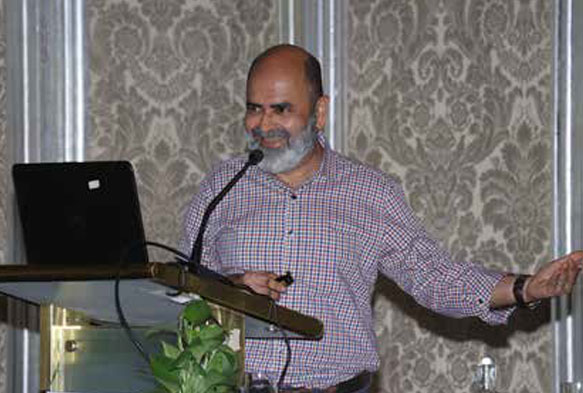
The Creative Life And How To Lead One: Insights From Dr. Hemant morparia, Iconic Cartoonist & Radiologist
Dr. Hemant Morparia, renowned for his diverse talents and achievements, recently shed light on leading a creative life in a thought-provoking
lecture.
Dr. Morparia emphasised the importance of utilising our brain’s full capacity and embracing its multidirectional growth, akin to a tree. Drawing on theories of brain lateralisation, he outlined the roles of the left brain – linear, logical, analytical – and the right brain – creative, artistic, intuitive. He noted the significance of a balanced approach, urging his audience not to leave the right brain behind, but equally not to allow the left brain to stagnate.
The notable polymath argued that living longer due to advances in medical technology, demands an extension in our professional life. He suggested engaging in a variety of tasks and jobs can help prevent burnout and keep one’s career interesting, reducing the risk of falling into DPP “dubious professional practices”. On a more serious note, Dr. Morparia also discussed the possibility that adopting a multidisciplinary lifestyle might aid in warding off conditions such as dementia. He explained that by learning and doing more and different things, we form unusual synapses in the brain. This, according to his theory, could provide a defence against dementia, an affliction that has visibly pained him when seeing former teachers or professors reduced to a shadow of their former selves.
To lead a creative life, Dr. Morparia encouraged embracing an active rather than passive role. Morparia observed that many of us experience a fear of failure in new fields after achieving success in one area. He questioned this mindset, advocating instead that the value of an act lies not in what we do, but how we do it. According to Dr. Morparia, performing an action with heart and sincerity leads to satisfaction, a sentiment that holds true regardless of whether we initially loved the task or learnt to love it over time.
The gifted cartoonist and physician proposed four reasons for pursuing an action. First, the joy of the act itself
brings pleasure and satisfaction. Second, the act provides monetary rewards, leading to satisfaction through wealth accumulation. Third, the money earned enables the purchase of material goods, leading to satisfaction through ownership. Finally, we may undertake an act to impress others or maintain social status.
However, Dr. Morparia highlighted the intrinsic rewards of ‘primary acts’ such as hobbies, music, or cartooning. These acts, he argued, provide satisfaction without the need for intermediaries or ‘middlemen’. He encouraged his
audience to explore such primary acts, promoting an enriched life rather than merely a rich one.
To discover one’s own primary acts, Dr. Morparia emphasised the need for self-analysis and self-understanding. He assured that everyone can find their unique passion or talent. After all, as per Dr. Morparia’s philosophy, the “purpoise” of life is to have a “veil” of a time, guaranteeing that the exploration of creative life would indeed lead to a great time.
Answering audience questions about his dual professions, he shared a lighter side of his philosophy. He jokingly
noted that prescribing laughter as a medicine might put him out of business as a clinician. He also shared insights
about cartooning, assuring that even the most strait-laced politicians turn out to be an endless source of material. His own eccentric habit involves using a foot massager while brainstorming for cartoons, suggesting it perhaps aids in better blood circulation to the brain.
Addressing the issue of time management with a multifaceted lifestyle, Dr. Morparia acknowledged that it comes with challenges, particularly in light of family commitments. However, he firmly believed that the richness and fulfilment from a creative life outweigh any potential drawbacks. As he concluded, while the economic law of diminishing returns may apply to money, it does not hold true for the act of creation, where every new cartoon still brings him the same thrill as the first one did.

